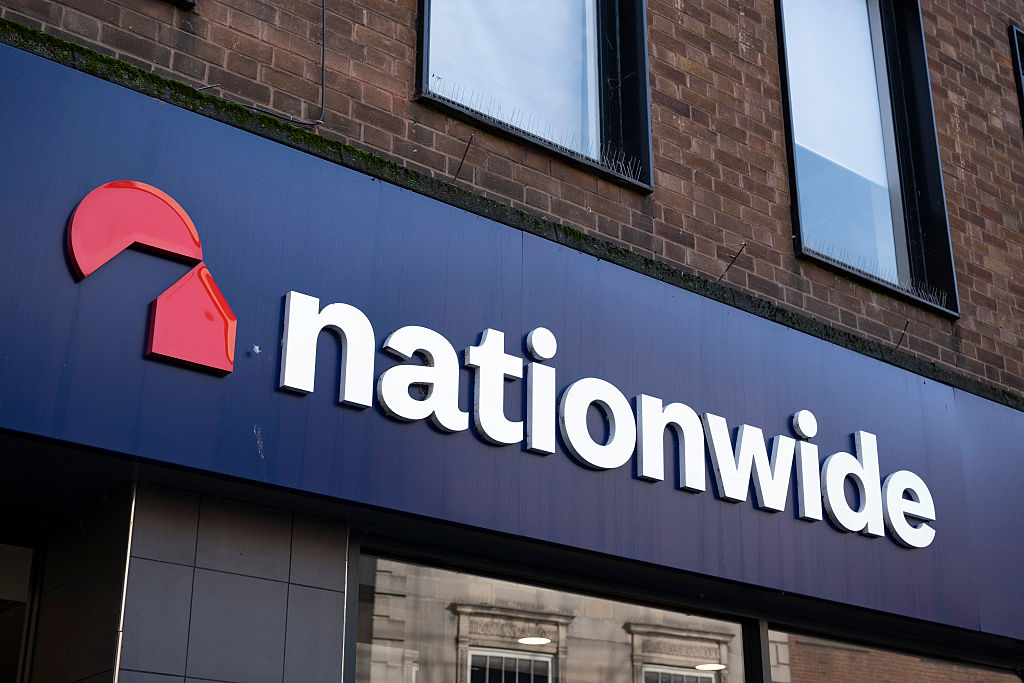The 62 UK areas where you could be priced out of using your Lifetime ISA
Saving for your first home in Croydon, Ealing, Brent or any one of these other locations? You could be at risk of being priced out of using your Lifetime ISA


First-time buyers are being urged to consider where they’re planning on purchasing before stuffing all their savings into a Lifetime ISA (LISA).
The popular savings vehicle offers a juicy government bonus to those saving for their first home – but the current rules cap the value of the property you are allowed to buy at £450,000.
Rising house prices mean that the average property already exceeds the LISA cap in 54 local authority areas in England, based on official data from HM Land Registry.
MoneyWeek
Subscribe to MoneyWeek today and get your first six magazine issues absolutely FREE

Sign up to Money Morning
Don't miss the latest investment and personal finances news, market analysis, plus money-saving tips with our free twice-daily newsletter
Don't miss the latest investment and personal finances news, market analysis, plus money-saving tips with our free twice-daily newsletter
This cap is creating challenges for many buyers, particularly those in the South and South East, who risk paying a penalty or alternatively having their hard-earned savings trapped in the account until they turn 60.
As well as prime London spots like Kensington and Chelsea, average property prices in areas outside of the capital like Windsor & Maidenhead and Buckinghamshire exceed £450,000. The average house prices in suburban areas like Hounslow and Enfield also exceed the limit.
Meanwhile, separate analysis from investment platform AJ Bell suggests that first-time buyers could be priced out of using a LISA in 62 UK regions by 2029, based on the cost of a typical terraced house. The cost of a flat could also exceed the threshold in 19 regions by the same date.
“Many aspiring homeowners who’ve worked hard to save for a deposit now face the prospect of properties in their desired location exceeding the upper limit in a Lifetime ISA,” said Dan Coatsworth, investment analyst at AJ Bell. “They must either buy somewhere else with lower property prices or pay the 25% penalty to withdraw their money from the Lifetime ISA.”
He warned: “Taking a hit via the penalty charge could see an aspiring homeowner left with a smaller deposit than they would have otherwise had, meaning they may have to take out a bigger mortgage which could also come with a higher rate of borrowing.”
It is possible that reforms are coming after a group of MPs launched a review of the Lifetime ISA in January. However, for now, savers should be cautious if they are thinking about buying a property in an area where prices are rapidly approaching (or already exceed) the LISA cap.
We take a closer look at where those areas are.
The 62 areas where house prices could exceed the Lifetime ISA cap by 2029
AJ Bell has calculated that first-time buyers in 62 regions could be priced out of using their Lifetime ISA by 2029, based on the price of a terraced house, up from 39 regions today.
The platform arrived at this figure by taking data from Nationwide’s house price index, and adjusting it in line with house price forecasts from the Office for Budget Responsibility (OBR).
Region | Average terraced house in 2029 |
Kensington and Chelsea | £2,282,331.20 |
City of Westminster | £1,649,655.30 |
Camden | £1,479,456.32 |
Islington | £1,171,092.44 |
City of London | £1,164,355.15 |
Hammersmith and Fulham | £1,140,290.67 |
Hackney | £984,508.43 |
Richmond upon Thames | £962,200.53 |
Wandsworth | £954,345.21 |
Lambeth | £863,624.77 |
Southwark | £833,667.69 |
Inner London | £832,218.06 |
Tower Hamlets | £762,643.81 |
Haringey | £762,489.21 |
Brent | £755,481.93 |
Barnet | £708,844.05 |
Ealing | £701,457.00 |
Merton | £696,192.86 |
Waltham Forest | £641,314.29 |
Lewisham | £640,713.82 |
London | £629,743.04 |
Kingston upon Thames | £617,424.57 |
Hounslow | £607,389.21 |
Harrow | £604,968.31 |
Elmbridge | £604,204.29 |
Redbridge | £603,529.89 |
Greenwich | £593,143.88 |
St Albans | £592,850.37 |
Cambridge | £577,380.59 |
Outer London | £573,857.34 |
Windsor and Maidenhead | £567,016.99 |
Enfield | £543,046.61 |
Brighton and Hove | £540,253.78 |
Epsom and Ewell | £533,088.55 |
Oxford | £532,876.82 |
Bromley | £528,600.75 |
Three Rivers | £507,121.85 |
Hillingdon | £506,858.59 |
Hertsmere | £506,105.77 |
Sutton | £503,899.96 |
Newham | £502,491.78 |
Mole Valley | £491,728.25 |
Tandridge | £489,253.58 |
Epping Forest | £486,925.66 |
Surrey | £484,817.31 |
Tunbridge Wells | £479,424.34 |
Reigate and Banstead | £478,784.67 |
Guildford | £478,772.35 |
Watford | £478,068.82 |
Waverley | £471,493.96 |
Runnymede | £465,636.08 |
Bexley | £463,438.12 |
Dacorum | £462,210.30 |
Winchester | £459,694.18 |
Croydon | £456,885.67 |
East Hertfordshire | £455,263.52 |
Havering | £455,261.28 |
Hertfordshire | £453,893.43 |
South Oxfordshire | £453,409.48 |
Spelthorne | £453,308.65 |
Cotswold | £452,942.32 |
Brentwood | £452,161.50 |
Source: AJ Bell. Based on Nationwide house price index as of January 2025. Prices increased each year until 2029 in line with house price growth forecasts from the Office for Budget Responsibility (OBR).
The above table includes areas outside of London like the Hertfordshire borough of Watford – popular with commuters thanks to its access to the Metropolitan line.
Areas like the London borough of Croydon also feature, despite previously being known for its relative house price affordability.
Those considering buying a flat rather than a house are also at risk of being unable to use their Lifetime ISA in parts of the UK. Thirteen local authority areas already exceed the threshold, and a further six are expected to be added to the list by 2029.
Region | Average flat in 2029 |
Kensington and Chelsea | £1,032,218.41 |
City of Westminster | £908,226.01 |
Camden | £815,608.96 |
City of London | £748,565.40 |
Hammersmith and Fulham | £683,927.05 |
Islington | £633,362.63 |
Hackney | £599,331.12 |
Inner London | £580,831.01 |
Wandsworth | £561,700.19 |
Richmond upon Thames | £556,290.42 |
Haringey | £531,925.71 |
Tower Hamlets | £513,439.04 |
Lambeth | £508,637.57 |
Brent | £484,790.43 |
Barnet | £479,829.88 |
Southwark | £479,392.98 |
Ealing | £479,074.82 |
London | £473,764.75 |
Merton | £463,533.34 |
Source: AJ Bell. Based on Nationwide house price index as of January 2025. Prices increased each year until 2029 in line with house price growth forecasts from the Office for Budget Responsibility (OBR).
What happens if you exceed the LISA cap?
If you withdraw money from your LISA to buy a property which costs more than the £450,000 cap, you will be slapped with a 25% penalty which could leave you worse off than when you started.
As well as wiping out the 25% government bonus, the penalty takes a chunk of your hard-earned savings – something which savers and industry experts have criticised as unfair.
For example, if you have built up a pot of £10,000, your government bonus would take it to £12,500. If you made an “unauthorised withdrawal”, you would lose that bonus, plus £625 of your own savings, as 25% of £12,500 is £3,125. This means your initial £10,000 pot would become £9,375.
According to the latest annual HMRC LISA statistics, which were published on 19 September, there was a 31% jump in the number of people making “unauthorised withdrawals" in 2023/24 versus the year before. The 99,650 people who raided their LISAs during this period faced a combined £75.3 million in withdrawal charges, or an average of £755 per person.
Will the LISA cap be scrapped?
Despite challenges with the house price cap, the LISA can be an attractive savings tool. A 25% return is considerably higher than you could hope to achieve on a regular cash savings account. It is also more than you would earn in a regular year in most stock markets.
Furthermore, the Treasury Committee (a cross-party group of MPs) recently launched a review of the Lifetime ISA to assess whether it is still fit for purpose. It is possible that the review will result in reforms.
The house price cap is one of the areas being looked at as part of the review, including whether it should be raised or even removed. MPs have also sought views on whether the withdrawal penalty should be scrapped.
“To ensure its continued success, we believe future-proofing the LISA is essential. Doing so would give the next generation of first-time buyers the confidence and flexibility they need to save for their first home and beyond,” said Brian Byrnes, head of personal finance at Moneybox, the largest LISA provider.
Get the latest financial news, insights and expert analysis from our award-winning MoneyWeek team, to help you understand what really matters when it comes to your finances.
Katie has a background in investment writing and is interested in everything to do with personal finance, politics, and investing. She previously worked at MoneyWeek and Invesco.
-
 Football fans issued warning over ticket scams ahead of 2026 World Cup
Football fans issued warning over ticket scams ahead of 2026 World CupSantander customers lost more to football scams in the first six months of 2025 compared to the same period in 2024, when total losses surged due to the Euros
-
 Nationwide fined £44 million over “inadequate” anti-money laundering systems
Nationwide fined £44 million over “inadequate” anti-money laundering systemsFailings in Nationwide’s financial crime processes between October 2016 to July 2021 meant one criminal was able to deposit £26 million from fraudulent Covid furlough payments in just eight days.
